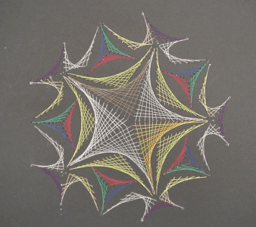Contour
Teaching loci and envelopes in GeoGebra
By Francisco Botana and Zoltán Kovács
GeoGebra is an open source mathematics education software being used in thousands of schools worldwide. Since version 4.2 (December 2012) it supports symbolic computation of locus equations as a result of joint effort of mathematicians and programmers helping the GeoGebra developer team. The joint work, based on former researches, started in 2010 and continued until present days, now enables fast locus and envelope computations even in a web browser in full HTML5 mode. In conclusion, classroom demonstrations and deeper investigations of dynamic analytical geometry is ready to use on tablets or smartphones as well.
In our talk we consider some typical secondary school topics when investigating loci is a natural way of defining mathematical objects. Such topics include definition of a parabola and other conics in different situations like synthetic definitions or points and curves associated with a triangle. In most secondary schools, however, no other than quadratic curves are discussed, but generalization of some exercises and also every day problems will introduce higher order algebraic curves. Thus our talk will mention the cubic curve ``strophoid'' as locus of heights of a triangle when one of the vertices moves on a circle. Also quartic ``cardioid'' and sextic ``nephroid'' can be of every day interest when investigating mathematics in a coffee cup.
We will also focus on GeoGebra specific tips and tricks when constructing a geometric figure to be available for getting the locus equation. Among others, simplification and synthetization (via the intercept theorem) will be mentioned.
